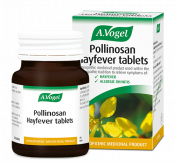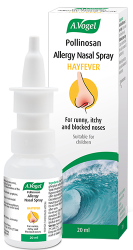Allergic rhinitis
Allergic rhinitis is a common condition whereby the immune system over-reacts to things like pollen and animal matter. In an attempt to fight these things off, the immune system produces lots of histamine which, in turn, causes the main symptoms of allergic rhinitis – inflammation, swelling and itching. However, in someone with allergic rhinitis the nose can also be affected by these allergens as the mucous membranes begin to produce more mucus thus resulting in congestion and a runny nose. Nevertheless, pollen and animal matter aren’t the only two causes of allergic rhinitis.
Allergic rhinitis and mould
In someone with allergic rhinitis mould, which is a type of fungi, can be problematic. Mould is able to grow in bathrooms and kitchens where it is warm, damp and humid. However, any damp spot within your home makes the ideal spot for mould to grow in so this includes wooden floors, carpets and wall-papered surfaces too.
When conditions are right, mould undergoes a state of reproduction which creates seeds called spores that are able to travel through the air. Spores are released when there’s a sudden increase in temperature in a moist environment for example, when central heating is turned on in a damp house or wet clothes are dried next to a fire place.
Mould itself does not cause allergic reactions but touching these spores and inhaling them can. When mould spores get into your nose for example, it can cause many of the main symptoms associated with allergic rhinitis such as sneezing and watery eyes. These symptoms may appear straight away or develop over time. Also, if the mould remains, so too will the symptoms so it’s a problem best dealt with quickly!
Risk factors
You may find yourself asking ‘why me?’ when suffering from allergic rhinitis but, as it turns out, there are a few reasons why you may face this issue.
Family history – unfortunately, if there is a pattern of allergies within your family this can go far in explaining why you now face the problem.
Living environment - living in a house with high humidity levels, excess moisture or poor ventilation can all contribute to the growth of mould which can then cause symptoms of allergic rhinitis to develop.
Working environment – occupations like farming, dairy work, baking and carpentry all expose the body to mould so could exacerbate the problem of allergic rhinitis.
How to prevent mould growing in your home
With mould being so problematic, it is a good idea to take steps towards preventing its growth. To do this, here are a few simple steps.
Dehumidifier – if indoor humidity is above 50% then fungi will thrive so a dehumidifier is a useful investment to help decrease humidity levels and keep moisture low.
Empty rubbish regularly – to make sure conditions aren’t favourable for mould you should make sure you empty rubbish regularly.
Extractor fans – when cooking, cleaning, showering and washing dishes it is advisable to use an extractor fan as this helps to remove moisture from the air. Moisture, as was mentioned, can cause mould to grow.
Get rid of old bedding – getting rid of old books, bedding and clothing provides mould with less opportunity to grow.
Keep bathroom doors shut – to prevent dampness spreading throughout the home you should keep internal doors closed when showing or having a bath.
Open windows – allowing fresh air to circulate your home also helps prevent the growth of mould so, to keep the place well-ventilated, open doors and windows. It is especially important to allow air inside when showering as this is when conditions are at their most moist and warm.
Plastic bedding covers – foam is often prone to mould so if your bedding is made from this use plastic covers.
Remove carpets from certain areas – a kitchen or bathroom is likely to get damp so it’s a good idea to remove any carpets from these areas.
Remove sources of dampness - should a leak develop, getting it fixed quickly will help to prevent mould by removing the source of dampness.
Storing clothing – mould grows when conditions are warm and damp so to prevent it becoming an issue avoid drying clothes indoors, don’t store your clothes in damp cupboards and try not to pack clothes too tightly in wardrobes.
How to deal with mould
Find the cause – first of all, work out what’s causing mould to grow. Is it a leaking pipe for example, or poor insulation? Once you’ve figured this out, you will be able to start addressing the problem.
Deal with damp and condensation – if you take steps to deal with these things then it is less possible for mould to grow and symptoms of allergic rhinitis to develop. So, to prevent the build-up of condensation it’s advisable to dry your washing outside, open your bedroom windows for at least 15 minutes each morning, ventilate rooms and make sure the home is well-insulated too.
Call in a professional – getting rid of mould completely is a tricky process so it’s best to call in a professional for this. After all, you don’t want to make your symptoms worse attempting to do it yourself!
Treatments
Fortunately, there are a few helpful treatments for allergic rhinitis that comes about because of mould.
Antihistamines – when your symptoms are long-lasting or severe a trip to your doctor may be necessary to help address the problem. They will often prescribe anti-histamines as these block the release of histamine which is produced in copious amounts when the body comes into contact with an allergen like mould.
Eye drops – if your eyes are beginning to suffer as a result of allergic rhinitis it is worth trying our eye drops as these contain Euphrasia to help treat irritated and dry eyes.
Pollinosan Hayfever Tablets – these tablets contain seven tropical herbs to help treat the symptoms of allergic rhinitis, such as congestion and a runny nose quickly and effectively. They can be used alongside other hayfever medications and are non-drowsy too which will help prevent allergic rhinitis from affecting you day-to-day life.





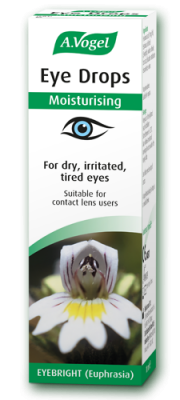
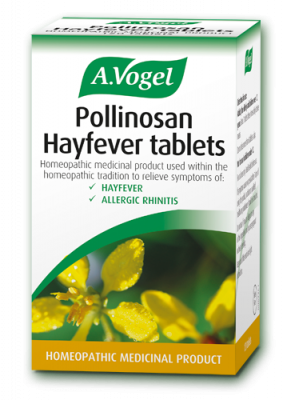
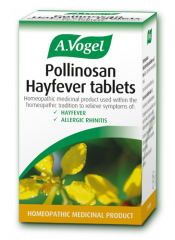 Looking for a solution to curb those hayfever symptoms such as itchy eyes, constant sneezing and congestion, then look no further than A.Vogel’s Pollinosan Hayfever tablets.
Looking for a solution to curb those hayfever symptoms such as itchy eyes, constant sneezing and congestion, then look no further than A.Vogel’s Pollinosan Hayfever tablets.
